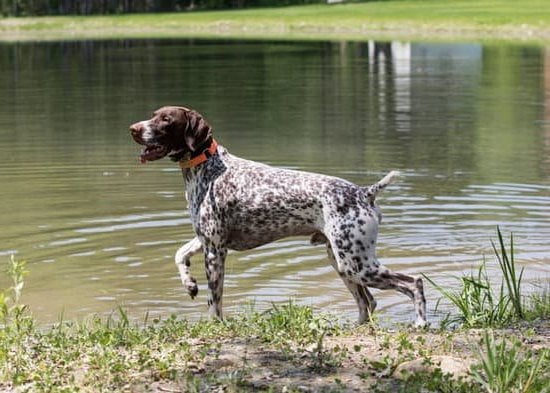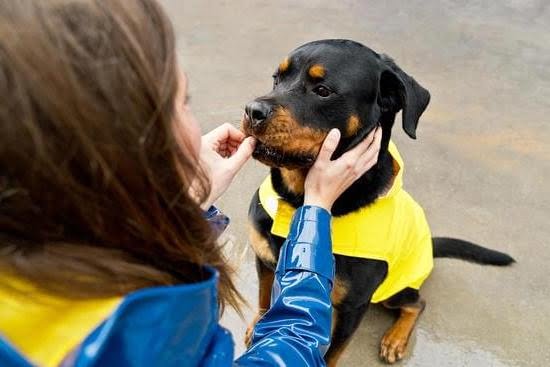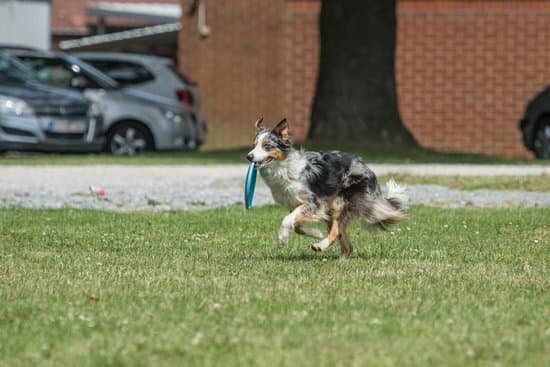Training a service dog to perform specific tasks is an important and specialized process that requires careful consideration and dedication. Service dogs play a crucial role in assisting individuals with disabilities, providing support, independence, and companionship. Understanding the unique responsibilities of a service dog and the specific tasks they can perform is essential for anyone considering training or owning a service dog.
Service dogs are trained to perform a wide range of tasks, depending on the needs of their handlers. From guiding individuals with visual impairments to alerting those with hearing loss, and even assisting individuals with mobility limitations, the capabilities of these animals are truly remarkable. This article will provide valuable insights into the different types of tasks service dogs can perform and the importance of proper training in preparing them for these specific duties.
Selecting and training a service dog for specific tasks requires careful consideration of both your needs as well as your dog’s abilities. Proper training is essential not only for the effectiveness of the tasks performed but also for the well-being of both the dog and its handler.
In this article, we will explore why proper training is crucial, provide a step-by-step guide on how to train your service dog for specific tasks, address common challenges that may arise during training, and illustrate real-life success stories of trained service dogs. Whether you are considering getting a service dog or already have one, understanding the training process is vital in ensuring a successful partnership with your canine companion.
Types of Service Dog Tasks
Service dogs are an invaluable resource for individuals with disabilities, as they are trained to perform a wide range of tasks that enhance their owner’s independence and quality of life. Understanding the different types of service dog tasks is essential when considering training for your own service dog. Here are some of the most common tasks that service dogs can be trained to perform:
- Guide and Navigate: Service dogs can assist individuals who are visually impaired by guiding them around obstacles and safely navigating them through public spaces.
- Alert and Response: Service dogs can be trained to alert their owners to important sounds, such as doorbells or smoke alarms, as well as respond in emergency situations by fetching help or activating an alarm.
- Assist with Mobility: Service dogs can provide physical support and stability to individuals with mobility impairments, helping them stand up, walk, or transfer from one place to another.
- Medical Assistance: Some service dogs are trained to detect changes in their owner’s body chemistry and provide alerts, such as detecting low blood sugar levels in diabetics.
When selecting specific tasks for your service dog, it’s important to consider your own needs and abilities, as well as the tasks that your dog is best suited to perform. Whether it’s guiding you through crowded spaces or providing medical alerts, each task requires careful consideration and training.
Knowing how to train your service dog specific tasks is crucial in ensuring that they can effectively perform their duties. The process involves a step-by-step approach that incorporates positive reinforcement, consistency, and patience. It’s also important to seek guidance from professional trainers who specialize in service dog training to ensure that both you and your dog receive the necessary support throughout the training process.
Selecting the Specific Tasks for Your Service Dog
When it comes to training your service dog for specific tasks, it is important to first identify your needs and the tasks that your dog can perform. This involves assessing your own disabilities or limitations and determining what tasks would be most beneficial in aiding you in your daily life. It is also crucial to consider your dog’s temperament, skills, and abilities when selecting the specific tasks for them to perform.
One of the key factors in identifying the specific tasks for your service dog is understanding what legal rights and protections are afforded to service dogs. Under the Americans with Disabilities Act (ADA), service dogs are defined as dogs that are individually trained to do work or perform tasks for people with disabilities.
The tasks performed by a service dog must be directly related to the person’s disability, such as guiding individuals who are blind, alerting individuals who are deaf, pulling a wheelchair, alerting and protecting a person who is having a seizure, reminding a person with mental illness to take prescribed medications, or calming a person with Post Traumatic Stress Disorder (PTSD) during an anxiety attack.
It is essential to consult with a professional dog trainer or behaviorist when deciding on specific tasks to train your service dog. They can provide expertise on how to identify which tasks would best suit your individual needs and how to effectively train your dog accordingly. Additionally, seeking guidance from organizations that specialize in training service dogs can also be beneficial in selecting appropriate tasks and creating a customized training plan for your service dog.
| Service Dog Legal Rights | ADA Definition of Service Dogs |
|---|---|
| Dogs must be individually trained | Tasks must be directly related to person’s disability |
| Tasks should assist with daily living | Emotional support animals are not considered service dogs under ADA |
The Importance of Proper Training
Proper training is crucial in ensuring that your service dog can effectively perform specific tasks to assist you. Whether it’s guiding individuals with visual impairments, alerting those who are deaf or hard of hearing to sounds, or providing support for individuals with mobility limitations, a well-trained service dog is essential. Without the proper training, a service dog may not be able to fulfill their duties effectively, which can compromise the safety and well-being of their handler.
There are several steps involved in training your service dog for specific tasks. It’s important to remember that training should be positive, consistent, and tailored to the individual needs of both the handler and the dog. Here’s a comprehensive guide on how to train your service dog for specific tasks:
1. Identify the specific tasks: Determine the particular tasks that you need your service dog to perform based on your individual needs and lifestyle.
2. Establish clear cues: Teach your service dog clear cues or commands for each specific task you want them to learn.
3. Practice regularly: Consistent practice in various environments will help solidify your service dog’s understanding and execution of specific tasks.
By following these steps and being patient and consistent, you can ensure that your service dog is trained to perform the specific tasks required to support you in your daily life. Remember that each dog is unique, so it’s essential to tailor the training process according to their individual abilities and needs while considering how they can best assist you.
Training a service dog for specific tasks requires dedication, patience, and an understanding of both the handler’s needs and the capabilities of the dog. It’s important to seek professional guidance or assistance if needed during this process as it requires both expertise and compassion. Keep in mind that every successful completion of a task by your service dog strengthens not only their abilities but also deepens the bond between you both.
Step-by-Step Training Process
Training your service dog for specific tasks requires a systematic approach that takes into account the unique needs of both the dog and the handler. Whether it’s assisting with mobility, providing emotional support, or alerting to medical conditions, proper training is essential for a service dog to perform its duties effectively. In this section, we will explore the step-by-step process for training your service dog for specific tasks.
Assessing Your Dog’s Abilities
Before beginning the training process, it’s important to assess your dog’s temperament, behavior, and physical capabilities. Not all dogs are suitable for every task, so it’s essential to consider whether your dog has the right qualities and characteristics for the specific task you have in mind. Additionally, a thorough assessment by a professional trainer or behaviorist can provide valuable insights into your dog’s potential and limitations.
Setting Clear Objectives
Once you have identified the specific task or tasks you want your service dog to perform, it’s crucial to set clear objectives for the training process. Determine what behaviors or actions are required for the task and break down these actions into achievable steps. Setting clear objectives will provide a roadmap for training and help you measure your dog’s progress as they learn each component of the task.
Positive Reinforcement Training
Positive reinforcement is an effective method for training service dogs. This involves rewarding desired behaviors with treats, praise, or playtime to encourage repetition of those behaviors. When teaching specific tasks to your service dog, use positive reinforcement techniques to reinforce correct actions and discourage unwanted behaviors. Consistency and patience are key when using positive reinforcement to train your service dog.
By following these steps and working closely with a professional trainer if needed, you can effectively train your service dog for specific tasks. The bond between you and your service dog will grow stronger as you work together towards achieving common goals, ultimately leading to a successful partnership built on trust and understanding.
Common Challenges and How to Overcome Them
Training a service dog for specific tasks can be a challenging yet rewarding process. While it is essential to identify the tasks that your dog will be performing, it is equally important to anticipate and address potential challenges that may arise during the training process. By understanding these common challenges and learning how to overcome them, you can ensure that your service dog is effectively trained to assist you in various situations.
One common challenge in training a service dog for specific tasks is maintaining consistency. Dogs thrive on routine and repetition, so it is crucial to establish a consistent training schedule and stick to it. This will help your dog understand what is expected of them and reinforce their learning. Consistency also extends to the use of cues and commands, as any variation in language or signals can confuse the dog.
Another challenge when training a service dog for specific tasks is managing distractions. Service dogs are often required to work in busy environments, so it is important to expose them to different stimuli during training. Gradually increasing levels of distraction while practicing specific tasks will help your dog learn to focus and remain disciplined in all situations.
Additionally, patience is key when overcoming challenges in training your service dog. Every dog learns at their own pace, so it’s important not to get frustrated if progress seems slow at times. Remember that building a strong bond with your service dog is essential for successful training, as trust and communication are fundamental in ensuring they perform their designated tasks effectively.
To further assist you as you train your service dog for specific tasks, here are some helpful tips:
- Use positive reinforcement techniques such as treats and praise
- Seek professional guidance from a certified trainer or behaviorist
- Keep training sessions short but frequent to maintain engagement
- Provide mental stimulation through interactive toys or puzzles
By acknowledging these common challenges and implementing strategies to overcome them, you can navigate the training process more effectively and set your service dog up for success in performing their designated tasks.
| Challenges | Ways to Overcome Them |
|---|---|
| Consistency | Establishing a consistent training schedule |
| Distractions | Gradually exposing the dog to different stimuli during training |
| Patience | Using positive reinforcement techniques and seeking professional guidance |
Building a Strong Bond
Establishing Trust and Communication
One of the most important aspects of training your service dog for specific tasks is building a strong bond based on trust and communication. Your dog needs to feel secure, safe, and understood in order to effectively perform the tasks required for its role as a service animal. This means taking the time to establish mutual trust and clear communication channels through positive reinforcement, consistency, and patience.
Emphasizing Positive Reinforcement
Using positive reinforcement techniques is crucial in creating a strong bond between you and your service dog. By rewarding desired behavior with treats, praise, or playtime, you’ll be encouraging your dog to engage with you in a positive way. This will reinforce the bond between you and your dog, making it more likely that they will eagerly perform the specific tasks they have been trained to do.
Spending Quality Time Together
In addition to dedicated training sessions, spending quality time together outside of work is also important for building a strong bond with your service dog. Engage in activities such as playtime, walks, or cuddling to foster a sense of companionship and connection.
This will not only strengthen your relationship with your dog but also contribute to their overall well-being and happiness. Be sure to prioritize bonding activities alongside the task-specific training to create a well-rounded experience for both you and your service dog.
Real-Life Applications
In conclusion, training your service dog for specific tasks is a crucial and rewarding process. The role of a service dog is invaluable for individuals with disabilities, as they provide assistance and support in various tasks. By understanding the different types of service dog tasks and selecting the specific ones that cater to your needs, you can ensure that your service dog can effectively aid you in your daily life.
The importance of proper training cannot be overstated, as it lays the foundation for your service dog to perform specific tasks with precision and reliability. The step-by-step training process outlined in this article provides a detailed guide on how to train your service dog for specific tasks, ensuring that both you and your canine companion are equipped for success.
While there may be challenges along the way, such as overcoming potential difficulties in training or building a strong bond with your dog, perseverance and patience will ultimately lead to success. Real-life applications showcase countless success stories of service dogs trained for specific tasks, highlighting the positive impact these dedicated animals have on the lives of their handlers.
With commitment, dedication, and love, you can train your service dog to fulfill a meaningful role in enhancing your quality of life through their specialized abilities.
By properly understanding the process of selecting and training specific tasks for your service dog, you can ensure that they become a valuable support system for you or someone else who requires their special skills and abilities. Whether it’s providing physical assistance, emotional support, or companionship, a well-trained service dog can make a profound difference in someone’s life.
As you embark on this journey with your furry companion, remember that the bond you share with them is just as important as the task-specific skills they acquire. Together, you and your service dog can navigate through challenges and triumphs while making a positive impact on those around you.
Frequently Asked Questions
Are Service Dogs Trained to Perform Certain Tasks?
Yes, service dogs are trained to perform specific tasks to assist individuals with disabilities. These tasks can vary depending on the person’s needs, but may include guiding the visually impaired, alerting for medical conditions, or providing stability for those with mobility issues.
How Do You Answer What Task Does Your Service Dog Perform?
When asked about what task a service dog performs, it’s important to explain the specific ways in which the dog assists its handler with their disability. This could be anything from retrieving medication or keys, providing balance support, or alerting to sounds for someone who is deaf.
What Training Method Is Used for Service Dogs?
The training methods used for service dogs depend on the organization training them and the specific needs of their future handler. Positive reinforcement techniques are commonly used, such as clicker training and rewarding desired behaviors with treats or praise.
Consistency and patience are key elements in this process, ensuring that the dog learns to perform its tasks reliably and without causing any stress to its handler.

Welcome to the blog! I am a professional dog trainer and have been working with dogs for many years. In this blog, I will be discussing various topics related to dog training, including tips, tricks, and advice. I hope you find this information helpful and informative. Thanks for reading!





